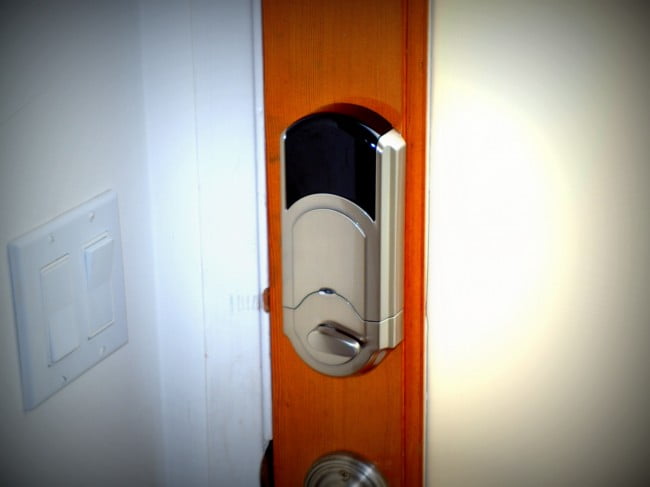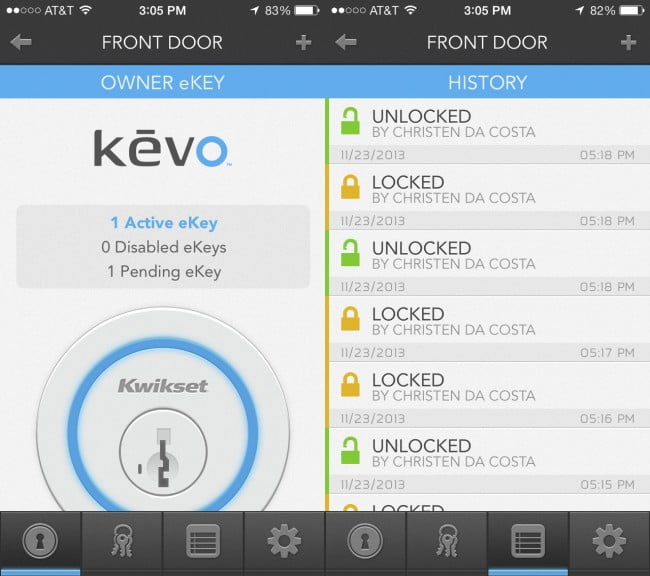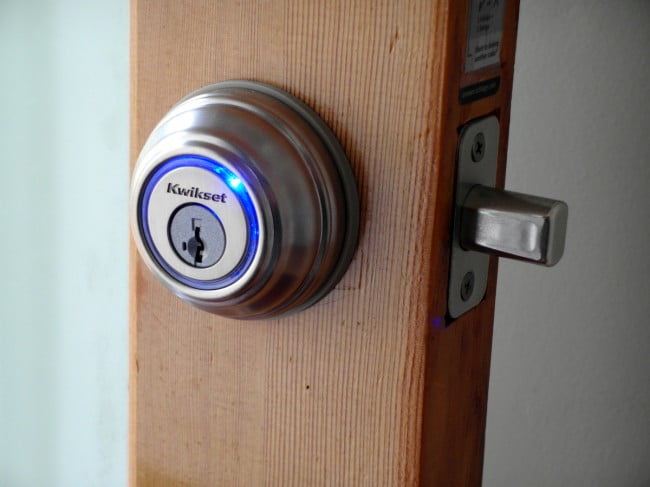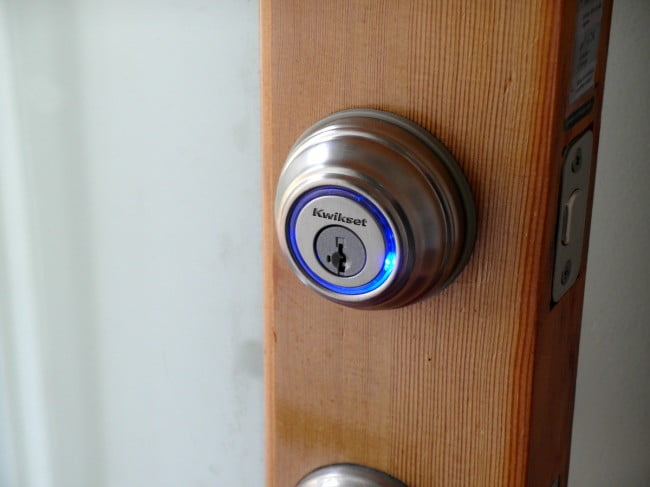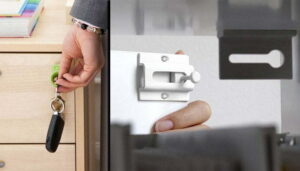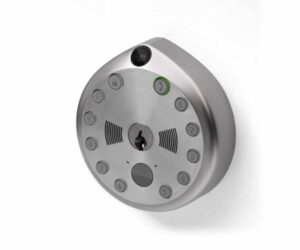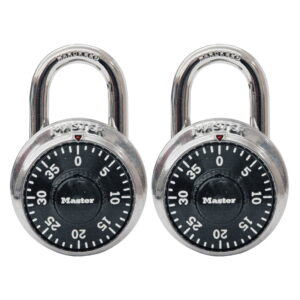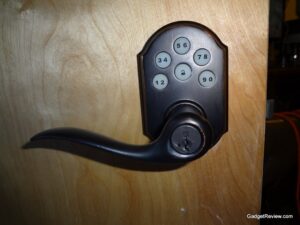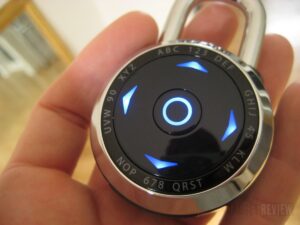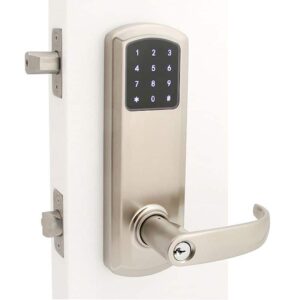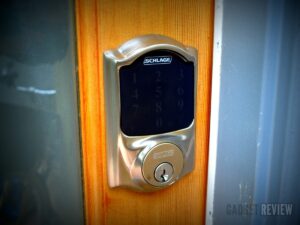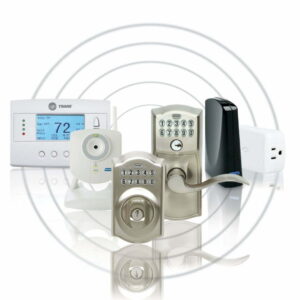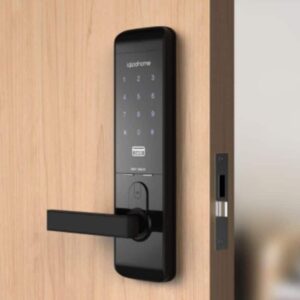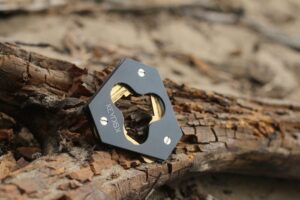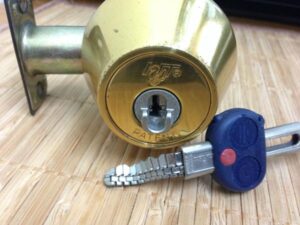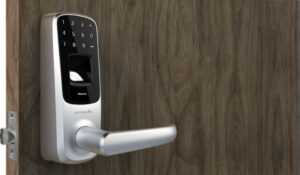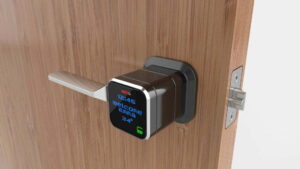The door lock, as we know it today, has been in existence, believe it or not, for hundreds of years. And while there has been enhancements in security, keyless access has largely been relegated to corporations. That is until now. You can now get the best smart lock and safely control the access and security of your house.
Thanks to the likes of Indiegogo and Kickstarter, the smart lock space has quickly become fragmented, if not saturated with an assortment of options. And all of these options are viable solutions. However, it’s only until you dig into the details that you can see there are ever so slight differences between the smartlocks.
Today, I’m looking at the Kevo Smartlock by Kwikset. The technology behind the Kevo Smartlock is from a company called Unikey, which appeared on Shark Tank last year. There the founder, Phil Dumas, successfully raised awareness, interest, and funding from some of the Sharks, though the last part would eventually fall through. Nevertheless, the Kevo smartlock is here, and the promise is a deadbolt that accepts both a physical key, as well virtual one by way of your smartphone.
Installation
Installing the Kevo Smartlock is relatively straight forward, especially if you’ve installed any type of deadbolt in the past. In my case, and if you recall, I recently installed Schlage’s touchpad system, which is remarkeably similar in design, down to the screws, as the Kevo Smartlock.
It’s an over simplification, but you’ll need to remove your door’s existing deadbolt completely. If you’re lock is built-in to the handle system, things will get more complicated, as the Kevo is designed to supplant a stand alone deadbolt. Once the existing hardware has been unscrewed from the door, it’s probably a 30-40 minute installation process, provided of course you don’t continuously drop the last two screws while you attempt to screw them into place – yes, they’re are that small and require a steady hand to get into place.
Related: Kwikset kevo plus review
Related: Kwikset premis touchscreen smart lock review
Once the lock is installed you’ll want to download the company’s iPhone app. You can also test things out using the included keyfob – each Kevo lock bundle includes one key fob as well as two physical keys. Once the app is loaded, and you’ve registered your lock – you’ll have to hit the program button on the on the inside portion of the lock – you’ll next need to calibrate the lock for proximity. What does that mean? To avoid someone accessing the lock while you’re at home, it will attempt to calibrate the locks sensitivity (i.e. range) based on the distance you generally stand from the door. The calibration process requires three attempts. Unfortunately, I could never complete the third attempt in my 15 tries and eventually gave up. That said, anything beyond 12-15 inches in proximity to the Kevo, and nothing happened. So a moot issue? In my experience, yes.
Note: make sure the antenna cord is not pinched, otherwise this can impact the Kevo’s range. On the inside of the lock there are instructions on where to nest the antenna. While it’s a bit of a trial and error scenario, it is viable to secure the antenna accordingly, it will just take some fiddling.
The iPhone App
The Kevo iPhone app – yes, it’s only compatible with the iPhone 4s, 5 and 5s – requires that you register before you begin to use the lock. Included, are two eKeys with each Kevo Lock bundle. Additional eKeys are $1.99, and from understanding are not transferable, unlike a traditional physical key. So it’s a sort of use it or lose it scenario. Ekeys are shared via email – not text message – and require the user to register their name, email and answer a set of security questions. I found this particularly arduous, especially considering that most Ekeys will be given to guests and those with infrequent access, as was my use case scenario. That said, Ekeys can’t be time restricted (this will eventually happen) , which seems like a massive oversight seeing as competitors can do this, though I don’t believe many have yet to launch. There are, however, admin keys, which can control the sharing of Ekeys – Anytime Ekey holders can not share keys.
Another drawback, aside from not offering a time restriction or the ability to work with any Android devices, is that the Kevo Smartlock is limited to Bluetooth connectivity only. This means that remote unlocking (to be added as earlier as the beginning of 2014), as seen in the yet to be released Lockitron, isn’t possible. Moreover, the notification system, which informs you when an Ekey holder enters or locks the door, depends on the iPhone user’s connection to pass along the data. And because of this, if a traditional key or Fob is used to unlock the door, you’ll be never receive a notification and nor will the system record it.
Use
To unlock or lock the Kevo one needs to have the app running in the background and Bluetooth turned on (you must also register, which I covered earlier), and then simply touch the outside of the Kevo lock with a finger. A set of LED lights that run the circumference of the lock wil flash blue and if all is set right, the Kevo will emit a motorized noise followed by an unlocking. When the Kevo is locked, the LEDs will also flash blue and then yellow to indicate the process was completed successfully.
In my experience, and even after ensuring that the antenna wasn’t pinched – according to Unikey’s founder this can cause reception issues – I still had to have my iPhone 5s within 12-18″ for it to work. In my testing, the closer my iPhone 5s was to the lock that faster the door unlocked. That said, unlocking/locking times could range any where from a second to 5 seconds. And very rarely, the lock wouldn’t react at all despite my touching it and the LEDs flashing.
Needless to say, if your iPhone dies, you no longer be able to unlock the Kevo. And while it is rare for me to run out of battery life in a day’s time, I did notice a significant reduction in my battery’s charge as a result of leaving Bluetooth turned on full time. Sure, I could turn off Bluetooth – more easily now than ever on the iPhone – but doing so partially defeats the convenience of the Kevo.
Wrap Up
There is no sense in quibbling about it: the Kevo is far from perfect. But that isn’t to say I don’t like it. In fact, I very much do and believe that once the remote locking issue is addressed, Ekeys can be shared more easily, and device compatibility expands, the Kevo will start to “unlock” more customers.
However, that doesn’t address the range issues I was plagued with, which is yet another variable that from where I stand has yet be addressed. Now, there is a chance that I received a bunk unit, and the Unikey team was and is still very happy to replace it. It’s worth noting, as Phil Dumas pointed out, there is a whole host of variables to consider, many which aren’t made completely apparent to consumers; they’ve tried to address these in the “background” with the hopes of making the whole process as seamless and painless as possible for Kevo users. In other words credit is due where credit is due.
And despite the caveats, there is still no disputing the Kevo’s wow factor when you approach your door and simply unlock it with the touch of a finger, with or without anyone present to witness it.
